Intrepid rock climbers might envision Colorado in the United States as the perfect rock climbing escape. But Tasmania, about a quarter of the size of the state of Colorado, is a much wilder and rugged land. Nearly a third of the entire island is set aside for preservation in the form of national parks or the Tasmanian World Heritage Area. And with a population of less than 500,000, it's easy to escape to some of the most isolated lands on Earth. Its pristine shores feature dramatic stacks of columned cliffs, while interior mountains boast decades worth of Alpine climbing. And Tasmania is uniquely suited for climbing with its dolerite cliffs.
Dolerite
Found only in Australia, dolerite is a course rock similar to basalt. But unlike basalt, Tasmanian dolerite gives you better handholds with superior friction and edges. The vast majority of climbing in Tasmania is performed on dolerite while some climbs take place on granite, quartzite and conglomerate crags. But the most dramatic cliffs and columns, especially on the coasts, are made of that highly sought after dolerite.
The diversity of climbs in Tasmania is staggering. But, here's the kicker -- Tasmania is only a quarter of the size of the state of Colorado. That means you can jump from one climb to another as you hop around the island. You could be surmounting Frenchman's Cap deep in Tasmania's wild interior one day and abseiling the dolerite sea cliffs of South Bruny National Park the next. You are not constrained to one type of climbing on such a diverse and small island. Instead, you'll be able to challenge a variety of climbs during your trip to the Natural State. You simply get the most bang for your rock climbing buck down in Tasmania.
1 Cataract Gorge
Launceston, Tasmania's largest inland city, boasts a beautiful geographic feature known as Cataract Gorge in the South Esk River Region. This area features over 850 well-worn routes on dolerite cliffs right in the middle of the city Launceston, and there's an airport that connects you to all Australian capitals, so you can be on world-class routes in no time. The routes can reach up to 30 metres in height, and, if you are somehow able to get bored of these routes, you'll find another 300 dolerite routes 15 minutes away in the North Esk River Region.
2 Ben Lomond National Park
This Northeast National Park is a massive mountainous plateau about 45 minutes from Launceston. Tracks follow parallel cracks hundred meters into the air on dolerite columns to provide for extremely long jamming routes. And, from above, you'll be able to see Olympic bike riders training on the winding road that cuts up the mountainous terrain.
3 Hillwood
The largest sport climbing area in the state, Hillwood sits just 25 minutes from Launceston. You'll find almost 150 routes bolted into basalt rock with varying grades ranging from 15 to 28. And you'll find all sorts of different challenges including steep face, razor crimps, large blocks, side pulls and roofs.
4 Frenchman's Cap
This one takes a little bit of planning. You'll have to take a multi-day hike into the deep reaches of Franklin-Gordon Wild Rivers National Park in the western region of the state. Lake Tahune Wilderness Hut sits at the bottom of the 1,446-metre mountain where you'll have to scout the weather before trying to climb the quartzite rockface. There are a variety of climbs that take you to the summit which all feature French names. You can challenge the 380-metre southeast face with a 13-pitch and 17 grade, or the 150-metre, six-pitch, 16-grade Tahune face.
5 The Sea Stacks of the Tasman Peninsula
About an hour's drive southeast of Hobart, you'll find the Tasman Peninsula. The drive's quite breathtaking as it'll take you over a 100-metre sliver of sand that connects the Tasman Peninsula to mainland Tasmania known as Eaglehawk Neck. You'll be blown away by the geological formations on the Tasman Peninsula including the towering dolerite sea stacks and the challenging sports crag known as the Paridiso. Climbers will be rewarded with stunning views of the remote Peninsula's coastline.
6 Freycinet National Park
This sliver of east coast paradise was the first to be named a national park in Tasmania along with the inland Mount Field National Park. It features alluring granite sea cliffs that may offer some of the best seacliff climbing in Tasmania. And there's a variety of climbing from sport to trad on multi- and single-pitch routes that will take you high above the sparkling blue waters below.
7 Organ Pipes
You don't have to go far to find spectacular climbing in Tasmania. Right after you touch down in Hobart, hire a car and drive about 20 minutes outside the city to Organ Pipes. You'll ascend quite a bit on the drive and it will take you to an Alpine setting with over 350 climbing routes. You'll find steep faces on many sport and trad routes.
































